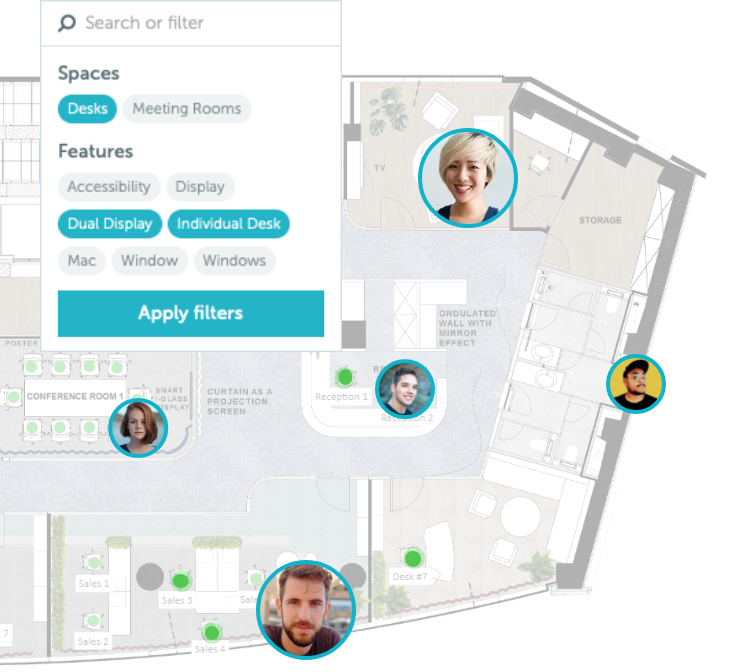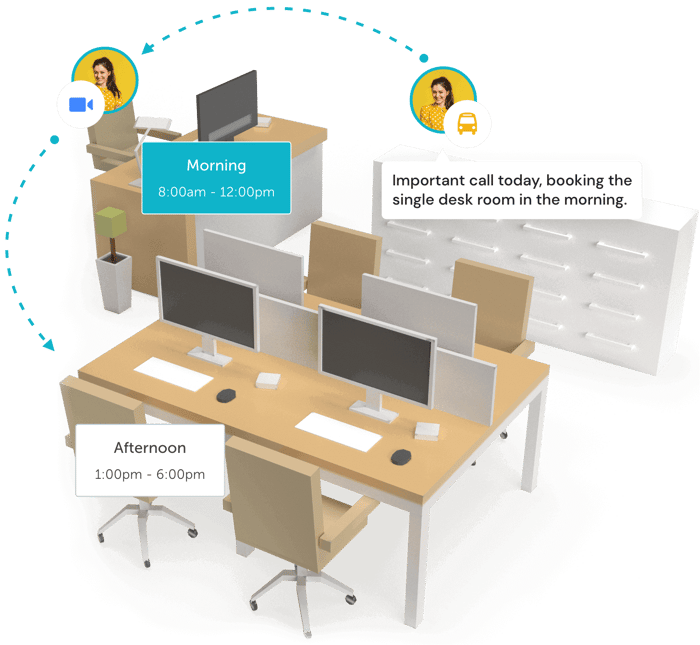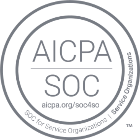20% of full-time employees lack tools to make using flexible work
arrangements easy and productive.
Eliminate conflicts
over popular seats
Flexible seating arrangements are based on the first come - first served principle, keeping the early bird employees in an advantage to choose the most desired workspaces. Opt for a managed approach to hot desking or office hoteling and give everyone tools to plan their seating in advance. Make it first reserved - first served.


Quickly find people and spaces
People who work in unassigned desk setups spend an average of 18 minutes each day trying to find an appropriate workspace. Save a coffee break with YAROOMS - look up spaces, space features, or people, and instantly locate your search results on the interactive office map.
Quickly find people and spaces
People who work in unassigned desk setups spend an average of 18 minutes each day trying to find an appropriate workspace. Save a coffee break with YAROOMS - look up spaces, space features, or people, and instantly locate your search results on the interactive office map.





“Disarm” no-shows
No-shows diminish the credibility of your hot desking or desk hoteling policy and decrease planning efficiency. Minimize their impact by activating the check-in step. It can be completed by scanning a QR code, using booking devices with ID readers, or simply confirming presence in a web application. If an employee does not check-in within a certain time interval, the space is freed up and added to the available list.


Customer-voted market leader committed to changing
the way we work.





Insights to get you started
Choosing the right desk booking solution is no small feat. We collected a
couple of insightful resources to help you identify your needs and navigate
the sea of options. Continue your research:
Hot desking FAQ
Hot desking is a term that describes an office environment where employees don't have their own individual desks and so they arrange themselves according to who wants - or needs - a seat at a given time. The idea is to have people move around the workplace in order to facilitate communication and teamwork.
Hot desking allows companies to increase efficiency of the work space they have and makes it easier to move desks as needed.
It’s called hot desking as it is a technique that allows you to move between different desks with ease. It gives people the freedom to change their location anytime they need without having to worry about what desk they have been assigned to. They can use any desk that is vacant at any time of the day with ease, making things more efficient.
Hot desking offers a number of potential benefits for workers and organisations alike, including:
- Increased flexibility and convenience for workers, who can easily move between different workspaces as needed.
- Reduced costs for organisations, who need to purchase less office space and furniture.
- Increased collaboration and creativity, as workers are more likely to interact with one another when working in close proximity.
- Easier management of workplace resources and space.
There are a few things to consider when managing hot desking:
- Make sure everyone has enough space and privacy.
- Encourage people to put away their belongings when they're finished using the desk so the space remains organized and clean.
- Make sure there are enough places to plug in laptops and phones, and that everyone knows where these places are.
- Set aside time each day for cleaning up the space and putting away any loose belongings.
The easiest way to implement hot desking is by using an app that allows you to automatically show open and booked desks (which will help your entire team avoid overbooking spaces and comply with the internal policy your company has put in place regarding hot desking).
There are pros and cons to hot desking. The main pro is that it saves space because people don't need their own desks. This can be especially helpful in tight spaces or for companies with a lot of employees. The main con is that some people may not like working in an environment where they don't have their own physical space to call their own. They may feel more isolated or less productive. Ultimately, it depends on the individual and the company culture as to whether hot desking will work for them or not.
Hoteling is a workplace seating arrangement in which employees are not assigned to a specific desk or office, but are instead given access to a range of work spaces that they can reserve on an as-needed basis.
The idea behind hoteling is to provide employees with more flexibility and mobility, so that they can work where and how they best prefer. This can be especially useful for people who need to move around frequently or who often work from different locations.
Hoteling can also help companies save money, since they don't have to provide each employee with a dedicated workspace. And it can help reduce the amount of office clutter, since employees won't be accumulating personal belongings at their desks.
Hoteling is when an employee reserves a specific workstation for a specific period of time. Hot desking is when an employee uses any open workstation in the office.









